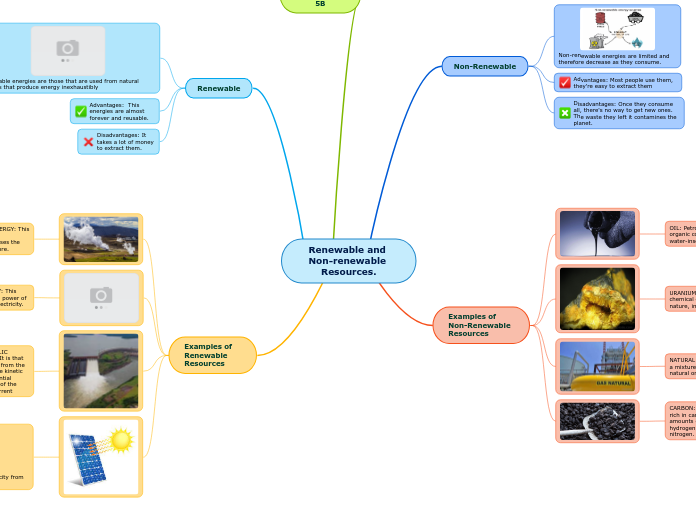によって Danilo Viteri 4年前.
2205
Renewable and Non-renewable Resources.

Renewable and Non-renewable Resources.
Examples of Renewable Resources
SOLAR ENERGY: consists of directly obtaining electricity from solar radiation
HYDRAULIC ENERGY:It is that obtained from the use of the kinetic and potential energies of the water current
AEOLIC ENERGY: This energy uses the power of wind to make electricity.
GEOTHERMAL ENERGY: This energy is located underground, it uses the power of Eart's core.
Renewable
Disadvantages: It takes a lot of money to extract them.
Advantages: This energies are almost forever and reusable.
Renewable energies are those that are used from natural sources that produce energy inexhaustibly
Letzly Ochoa
5B
Examples of Non-Renewable Resources
CARBON: It is a black rock, very rich in carbon and with variable amounts of other elements, mainly hydrogen, sulfur, oxygen and nitrogen.
NATURAL GAS: Natural gas is a mixture of light gases of natural origin.
URANIUM: Uranium is a chemical element present in nature, in rocks, water or air
OIL: Petroleum is a mixture of organic compounds, mainly water-insoluble hydrocarbons.
Non-Renewable
Disadvantages: Once they consume all, there's no way to get new ones. The waste they left it contamines the planet.
Advantages: Most people use them, they're easy to extract them
Non-renewable energies are limited and therefore decrease as they consume.

